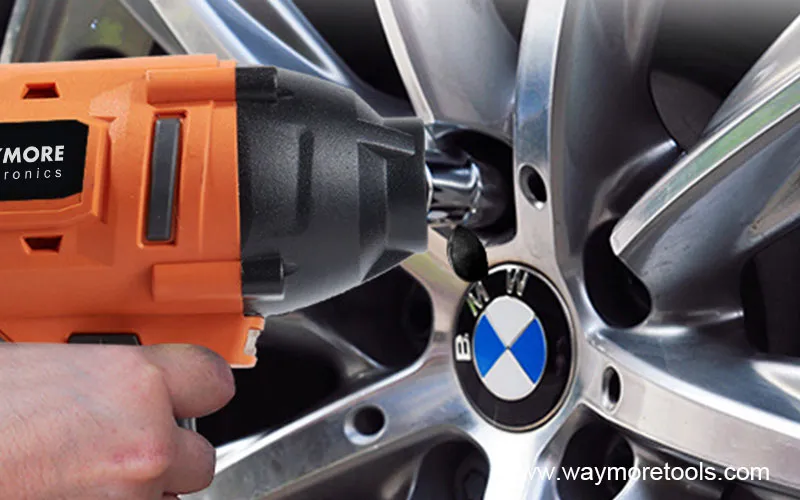
Table of Contents
- Introduction
- Wrist Pain: Causes and Prevention
- Elbow Tendonitis: Symptoms and Treatment
- Shoulder Impingement: Diagnosis and Management
- Carpal Tunnel Syndrome: Risk Factors and Prevention
- Nerve Damage: Causes and Recovery
- Muscle Strains: Prevention and Rehabilitation
- Joint Instability: Assessment and Treatment
- Conclusion
Grip it right, or pay the price
Introduction
Incorrect grip during power wrench operation can lead to a variety of common injuries, including:* **Repetitive motion injuries**, such as carpal tunnel syndrome and tendonitis, which can develop over time due to the repetitive motions involved in using a power wrench.
* **Muscle strains and sprains**, which can occur when the muscles and ligaments in the hand and arm are overexerted or stretched too far.
* **Nerve damage**, which can occur when the nerves in the hand and arm are compressed or irritated by the power wrench.
* **Fractures**, which can occur if the power wrench is dropped or if the hand is caught in the wrench's moving parts.
Wrist Pain: Causes and Prevention
Incorrect grip during power wrench operation can lead to a variety of common injuries, particularly in the wrist. Understanding the proper grip technique and the potential consequences of improper grip is crucial for preventing these injuries.One of the most common injuries caused by incorrect grip is wrist pain. This pain can range from mild discomfort to severe pain that interferes with daily activities. The pain is often caused by excessive force being applied to the wrist, which can strain the tendons and ligaments that support the joint.
Another common injury caused by incorrect grip is carpal tunnel syndrome. This condition occurs when the median nerve, which runs through the carpal tunnel in the wrist, becomes compressed. The compression can cause numbness, tingling, and pain in the hand and fingers.
In addition to wrist pain and carpal tunnel syndrome, incorrect grip can also lead to other injuries, such as tendonitis and bursitis. Tendonitis is the inflammation of a tendon, while bursitis is the inflammation of a bursa, which is a fluid-filled sac that cushions the bones and tendons. These injuries can cause pain, swelling, and stiffness in the wrist.
To prevent these injuries, it is important to use the proper grip technique when operating a power wrench. The correct grip is to hold the wrench with your palm facing the wrench's handle and your fingers wrapped around the handle. Your thumb should be placed on the side of the handle, opposite your fingers.
When gripping the wrench, it is important to avoid using too much force. You should only apply enough force to keep the wrench in place and to prevent it from slipping. If you are using too much force, you are more likely to strain your wrist and develop an injury.
If you experience any pain or discomfort in your wrist while operating a power wrench, it is important to stop using the wrench and rest your wrist. You should also apply ice to the wrist to reduce swelling and pain. If the pain persists, you should see a doctor to rule out any serious injuries.
By following these tips, you can help prevent common injuries caused by incorrect grip during power wrench operation.
Elbow Tendonitis: Symptoms and Treatment
**Common Injuries Caused by Incorrect Grip during Power Wrench Operation**Power wrenches are indispensable tools in various industries, but improper grip techniques can lead to a range of injuries, particularly in the elbow. Understanding the correct grip and its implications is crucial for preventing these ailments.
**Elbow Tendonitis**
Elbow tendonitis, also known as lateral epicondylitis, is a common injury caused by excessive strain on the tendons that attach to the outside of the elbow. This condition arises when the wrist is repeatedly extended or supinated (turned palm up) against resistance.
**Incorrect Grip Techniques**
Incorrect grip techniques that contribute to elbow tendonitis include:
* **Tight Grip:** Gripping the wrench too tightly increases pressure on the tendons, leading to inflammation and pain.
* **Pronated Grip:** Holding the wrench with the palm facing down puts excessive stress on the tendons, especially during supination.
* **Extended Wrist:** Keeping the wrist extended while using the wrench places additional strain on the tendons, exacerbating the condition.
**Symptoms of Elbow Tendonitis**
Symptoms of elbow tendonitis include:
* Pain on the outside of the elbow
* Tenderness to the touch
* Stiffness and reduced range of motion
* Weakness in the forearm
**Treatment for Elbow Tendonitis**
Treatment for elbow tendonitis typically involves:
* Rest and immobilization
* Ice and compression
* Physical therapy to strengthen the tendons
* Corticosteroid injections to reduce inflammation
* Surgery in severe cases
**Prevention**
Preventing elbow tendonitis caused by incorrect grip during power wrench operation requires:
* **Proper Grip:** Hold the wrench with a loose, relaxed grip, allowing the fingers to wrap around the handle naturally.
* **Neutral Wrist:** Keep the wrist in a neutral position, avoiding excessive extension or supination.
* **Regular Breaks:** Take frequent breaks to rest the tendons and prevent strain.
* **Ergonomic Tools:** Use ergonomically designed wrenches that reduce stress on the tendons.
**Conclusion**
Incorrect grip techniques during power wrench operation can lead to debilitating injuries such as elbow tendonitis. By understanding the proper grip and implementing preventive measures, individuals can minimize the risk of these ailments and ensure safe and efficient tool operation.
Shoulder Impingement: Diagnosis and Management
**Common Injuries Caused by Incorrect Grip during Power Wrench Operation**Incorrect grip during power wrench operation can lead to a variety of injuries, particularly in the shoulder region. The repetitive and forceful movements involved in using power wrenches can strain the muscles, tendons, and ligaments of the shoulder, resulting in pain, discomfort, and reduced function.
One of the most common injuries associated with incorrect grip is shoulder impingement. This occurs when the tendons of the rotator cuff muscles, which help to stabilize and rotate the shoulder, become compressed between the humerus (upper arm bone) and the acromion (a bony projection on the shoulder blade). This compression can cause inflammation, pain, and limited range of motion.
Another common injury is rotator cuff tendinitis. This condition involves inflammation of the tendons of the rotator cuff muscles, which can lead to pain, weakness, and difficulty performing overhead activities. Incorrect grip can also contribute to biceps tendinitis, which affects the tendon of the biceps muscle that runs along the front of the upper arm.
In addition to these specific injuries, incorrect grip can also lead to general shoulder pain and discomfort. This can be caused by muscle strain, ligament sprains, or nerve irritation. Over time, these injuries can become chronic and significantly impact daily activities.
To prevent these injuries, it is crucial to use proper grip techniques when operating power wrenches. This includes:
* Holding the wrench with a neutral grip, with the wrist straight and the elbow bent at a 90-degree angle.
* Using a two-handed grip for heavy-duty tasks.
* Avoiding excessive force or repetitive motions.
* Taking frequent breaks to rest the shoulder muscles.
If you experience any pain or discomfort in your shoulder while using a power wrench, it is important to stop using the tool and consult a healthcare professional. Early diagnosis and treatment can help prevent further injury and ensure a full recovery.
Carpal Tunnel Syndrome: Risk Factors and Prevention
**Common Injuries Caused by Incorrect Grip during Power Wrench Operation**Power wrenches are indispensable tools in various industries, but improper grip techniques can lead to a range of musculoskeletal injuries. Understanding the correct grip and avoiding common mistakes is crucial for preventing these ailments.
One of the most prevalent injuries associated with incorrect grip is carpal tunnel syndrome. This condition arises from excessive pressure on the median nerve, which runs through the carpal tunnel in the wrist. Prolonged use of power wrenches with an improper grip can compress the nerve, causing numbness, tingling, and pain in the thumb, index, middle, and ring fingers.
Another common injury is tendinitis, an inflammation of the tendons that connect muscles to bones. Incorrect grip can strain these tendons, leading to pain, swelling, and tenderness in the wrist, elbow, or shoulder. Over time, tendinitis can weaken the tendons and make them more susceptible to tears.
Epicondylitis, also known as tennis elbow or golfer's elbow, is another potential injury caused by improper grip. This condition involves inflammation of the tendons that attach to the elbow. Repetitive use of power wrenches with an incorrect grip can overload these tendons, resulting in pain, stiffness, and tenderness in the elbow.
To prevent these injuries, it is essential to maintain a proper grip on the power wrench. The handle should be held firmly with the thumb on one side and the fingers on the other. The wrist should be kept straight and the elbow slightly bent. Avoid gripping the wrench too tightly or using an awkward hand position.
Additionally, it is important to take frequent breaks and stretch the hands, wrists, and arms to reduce muscle fatigue and prevent strain. If any pain or discomfort occurs, stop using the power wrench and consult a healthcare professional.
By following these guidelines and using power wrenches with the correct grip, individuals can minimize the risk of developing musculoskeletal injuries and ensure safe and efficient operation.
Nerve Damage: Causes and Recovery
Incorrect grip during power wrench operation can lead to a variety of nerve injuries, ranging from mild discomfort to severe pain and disability. The most common nerve injuries associated with improper grip include carpal tunnel syndrome, ulnar nerve entrapment, and radial tunnel syndrome.Carpal tunnel syndrome occurs when the median nerve, which runs through the carpal tunnel in the wrist, becomes compressed. This can cause numbness, tingling, and pain in the thumb, index, middle, and ring fingers. In severe cases, carpal tunnel syndrome can lead to muscle weakness and atrophy.
Ulnar nerve entrapment occurs when the ulnar nerve, which runs along the inside of the elbow, becomes compressed. This can cause numbness, tingling, and pain in the little finger and ring finger. In severe cases, ulnar nerve entrapment can lead to muscle weakness and atrophy in the hand.
Radial tunnel syndrome occurs when the radial nerve, which runs along the outside of the elbow, becomes compressed. This can cause numbness, tingling, and pain in the back of the hand and thumb. In severe cases, radial tunnel syndrome can lead to muscle weakness and atrophy in the forearm and hand.
The symptoms of nerve injuries caused by incorrect grip during power wrench operation can vary depending on the severity of the injury. In some cases, the symptoms may be mild and only occur during or after using the power wrench. In other cases, the symptoms may be more severe and persistent, even when not using the power wrench.
If you experience any of the symptoms of a nerve injury, it is important to see a doctor to get a diagnosis and treatment plan. Treatment for nerve injuries caused by incorrect grip during power wrench operation may include rest, ice, compression, and elevation (RICE); physical therapy; and surgery.
To prevent nerve injuries caused by incorrect grip during power wrench operation, it is important to use the correct grip and posture. When using a power wrench, hold the wrench with your palm facing the handle and your fingers wrapped around the handle. Keep your wrist straight and your elbow bent at a 90-degree angle. Avoid using a power wrench with a grip that is too small or too large for your hand.
Muscle Strains: Prevention and Rehabilitation
Incorrect grip during power wrench operation can lead to a variety of common injuries, ranging from minor discomfort to severe pain and disability. Understanding the proper grip technique and the potential consequences of incorrect grip is crucial for preventing these injuries.One of the most common injuries associated with incorrect grip is muscle strain. When the muscles are subjected to excessive force or improper positioning, they can become overstretched and torn. This can result in pain, swelling, and reduced range of motion. The muscles most commonly affected by muscle strain during power wrench operation include the forearm flexors, extensors, and pronators.
Another common injury caused by incorrect grip is tendonitis. Tendons are the connective tissues that attach muscles to bones. When tendons are subjected to repeated or excessive stress, they can become inflamed and irritated, leading to pain, swelling, and tenderness. The tendons most commonly affected by tendonitis during power wrench operation include the flexor carpi radialis and ulnaris tendons, which are located on the inside of the wrist.
In addition to muscle strain and tendonitis, incorrect grip can also lead to nerve damage. Nerves are responsible for transmitting signals between the brain and the muscles. When nerves are compressed or irritated, they can cause pain, numbness, and tingling. The nerves most commonly affected by nerve damage during power wrench operation include the median and ulnar nerves, which run through the wrist and hand.
To prevent these injuries, it is essential to use the proper grip technique when operating a power wrench. The correct grip involves holding the wrench with the thumb and forefinger on one side of the handle and the remaining fingers on the other side. The wrist should be straight and the elbow should be slightly bent. The wrench should be held firmly but not too tightly, and the force should be applied smoothly and evenly.
If you experience any pain or discomfort while operating a power wrench, it is important to stop immediately and consult a healthcare professional. Early diagnosis and treatment can help to prevent further injury and promote healing.
Joint Instability: Assessment and Treatment
Incorrect grip during power wrench operation can lead to a variety of common injuries, ranging from minor discomfort to severe pain and disability. Understanding the mechanics of power wrench operation and employing proper gripping techniques are crucial for preventing these injuries.One of the most common injuries associated with incorrect grip is wrist pain. When the wrist is not properly aligned during power wrench operation, excessive force can be applied to the tendons and ligaments that support the joint. This can lead to inflammation, pain, and reduced range of motion. In severe cases, it can even result in carpal tunnel syndrome, a condition characterized by numbness, tingling, and weakness in the hand and fingers.
Another common injury caused by incorrect grip is elbow pain. The elbow joint is responsible for extending and flexing the arm, and it can be subjected to significant stress during power wrench operation. If the grip is too tight or the wrist is not properly aligned, the elbow joint can be forced into an awkward position, leading to pain, inflammation, and reduced range of motion.
In addition to wrist and elbow pain, incorrect grip can also cause shoulder pain. The shoulder joint is a complex structure that allows for a wide range of motion, but it can also be vulnerable to injury if the grip is not correct. When the grip is too tight or the wrist is not properly aligned, the shoulder joint can be forced into an unnatural position, leading to pain, inflammation, and reduced range of motion.
To prevent these injuries, it is essential to use proper gripping techniques when operating a power wrench. The grip should be firm but not too tight, and the wrist should be kept in a neutral position. The elbow should be slightly bent, and the shoulder should be relaxed. By following these guidelines, you can help to reduce the risk of developing common injuries associated with incorrect grip during power wrench operation.
If you do experience pain or discomfort while operating a power wrench, it is important to stop using the tool and consult with a healthcare professional. Early diagnosis and treatment can help to prevent further injury and ensure a full recovery.
Conclusion
**Conclusion:**Incorrect grip during power wrench operation can lead to a variety of injuries, including:
* Muscle strains and sprains
* Tendonitis
* Carpal tunnel syndrome
* Nerve damage
* Fractures
These injuries can be debilitating and may require extensive treatment. It is important to use the correct grip when operating a power wrench to avoid these injuries.
 Waymore Tools
Waymore Tools
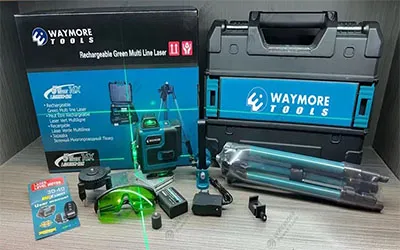
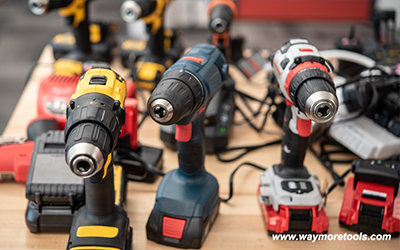
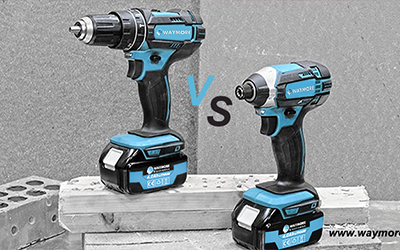
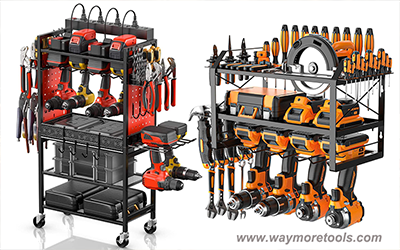
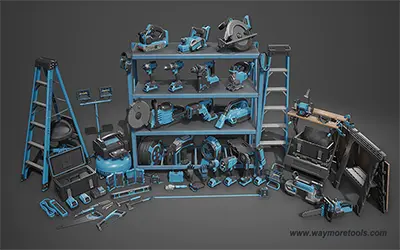
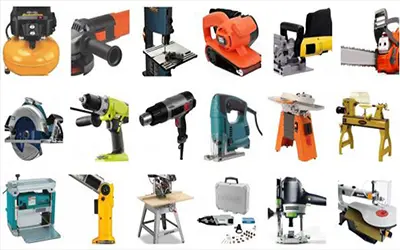














































































































































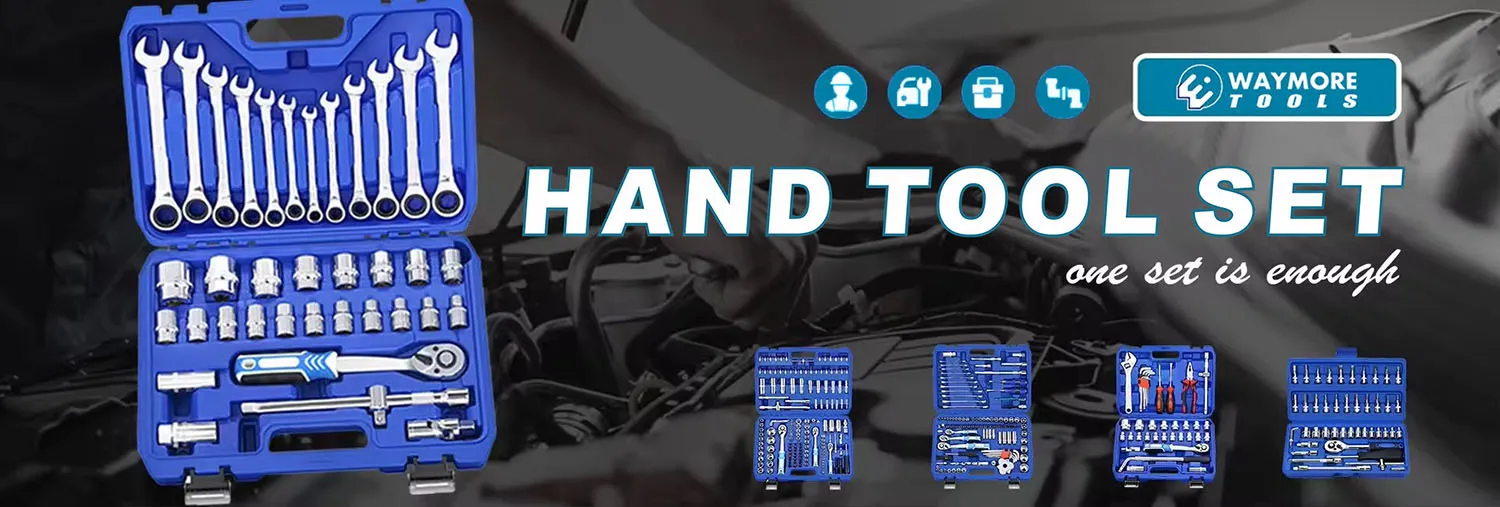























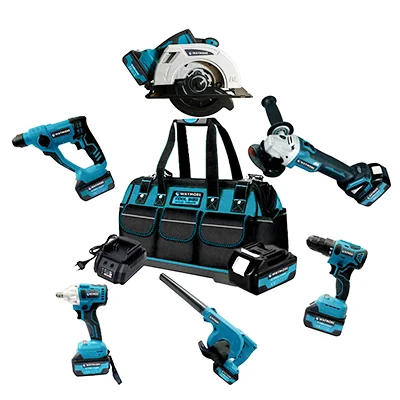


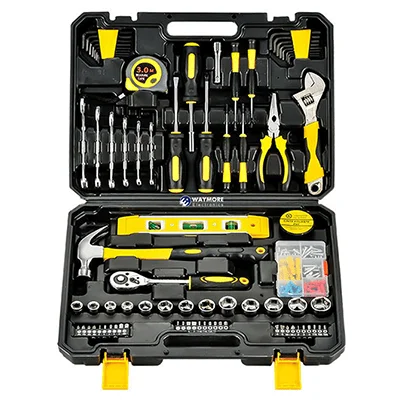

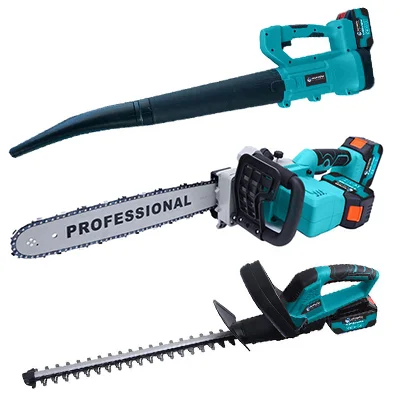

Leave a Comment